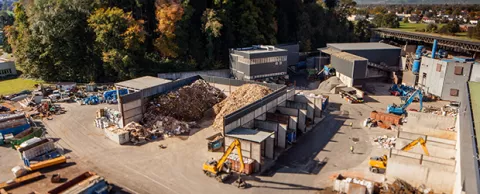
According to the media, there is a recycling crisis. Some recyclers are losing millions and closing facilities. Some materials that used to be valuable aren’t any longer. Packaging trends have made others more expensive to reuse.
But people WANT to recycle. They’re even willing to rip apart their single-serving coffee pods if that means keeping more stuff out of landfills.
So what should your city do? There’s opportunity in times of change. As you’ll read below, recycling today isn’t what it was even five years ago. Your success — and the health of the planet — comes from understanding what’s changed and how to respond to it. Here are four trends and ideas for addressing them. — Kevin Ebi
1. Cut waste in the collection process
As you’ll read elsewhere in our recycling Special Theme Edition, one of the biggest opportunities to cut your expenses is to get much smarter about how you collect recycled goods.
Driving big trucks around to collect half-full recycling bins is incredibly wasteful in and of itself. There are a number of technologies and solutions that can help you get smarter about your collection routes. The Dutch city of Rotterdam is one success story; it cut its collection expenses by well over 20%.
2. Understand and adapt to packaging trends
Some of the problems that recyclers are struggling with today are directly the result of changes in packaging. For one, companies are using lighter plastics in response to demand from consumers who believe that will help the environment. Problem is, those lighter plastics are harder to sort. There’s also strong growth in single-use products, which generate more waste.
But there are answers, if you look for them. Consider the single-serving coffee pod. People want to recycle them. They are not only willing to take apart the cups if it will make it easier to recycle, they are clamoring to do that, if it would help.
So two companies that make and sell the cups, joined forces with a British Columbia waste hauler, a plastics company and an environmental interest group to follow the cups from the homes, into the collection bins and all the way through the waste management process to identify and fix recycling bottlenecks. It makes residents happy and keeps more stuff out of landfills.
3. Embrace composting
Some cities and counties are finding value in compositing. One is Prince George's County, MD, which was already breaking even on its new composting facility two years into operation.
The county calls the compost “gold.” It sells the compost for $12.50 per cubic yard to a variety of customers that even include the White House. The compost comes from food waste from a grocery store chain, school districts, several cities and Washington, D.C. museums.
4. Turn trash into clean energy
Waste Dive says another recycling trend involves expanding our definition. Instead of thinking only about how to turn old plastic into new plastic, think more broadly about what you can do with your waste.
The publication points out that landfill operators have produced methane for years, but now are turning their attention to compressed natural gas, a cleaner and more energy-efficient product. Some waste haulers have already turned more than half of their fleets into trucks that can use the fuel, and new U.S. incentives are making it an even better value.
More stories …
All that garbage: Cities explore one-bin recycling to reduce waste (and cost)
IBM People For Smarter Cities: Plastic recycling makes public spaces



